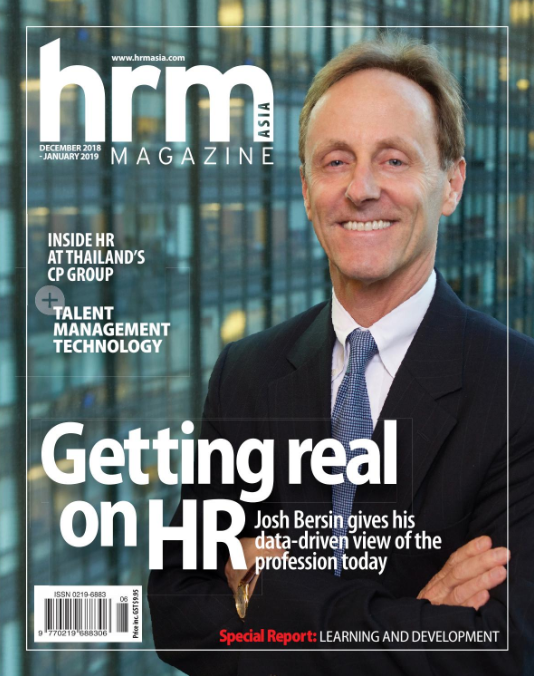The partnership between HR and Finance

Traditionally, it has rarely been an effective partnership.
HR leaders and their counterparts in the finance team have long been considered polar opposites. The Chief Financial Officer (CFO) has long had that coveted “seat at the table” for many years, providing powerful advice for the CEO and thereby significant influence over the direction of the organisation. The Chief HR Officer meanwhile is relatively new to the table, and has a strategic direction often at odds with the CFO’s default trajectory.
But if HR strategy is now earning respect and buy-in from the very top, does it matter if other functions or board members are not yet on board? Absolutely, says Tim Wakeford, Vice President of Financial Products Strategy at Workday. As a finance leader himself, he says it is vital that these two leaders – and the business functions they represent – work in partnership for the benefit of the CEO and the business as a whole.
Unfortunately, he says each one is far more likely to represent an obstacle to the other, making that perfect partnership scenario all the more difficult to achieve.
“I always think of it as a sibling rivalry,” he tells HRM Magazine Asia. “The traditional finance guy is numbers-oriented, often introverted, a fair communicator, detail-focused, and quite driven. Traditionally, more HR people are fluffier, nicer, better communicators, and more in touch with people.
“But neither of these stereotypes can be effective partners to a CEO.”

A recent Workday survey of global CFOs asked them which other functional heads in the C-suite they had built “seamless” relationships with. It found that relationships between CFOs and Chief HR Officers were the second least effective.
A powerful relationship in waiting
Research suggests these stereotypes are very much in force across organisations around the world at the moment.
A Workday survey of global CFOs asked them which other functional heads in the C-suite they had built “seamless” relationships with.
It found that relationships between CFOs and Chief HR Officers were the second least effective, with only 31% of the research respondents indicating a positive relationship with their HR counterpart.
Chief Sales Officers had the most effective relationships with CFOs (37% indicating a “seamless” partnership), possibly because of the revenue element to their roles, while the leader of another cost centre – the Chief Information Officer – could claim an effective relationship with only 27% of the CFOs surveyed.
“More needs to be done to move finance away from its siloed past, and into a more collaborative future,” the Finance Redefined study noted.
Wakeford says there is enormous potential upside if this can happen, particularly when it comes to finance’s relationships with Chief HR Officers specifically.
“A CEO needs advice, recommendations, and solutions,” he says. “They don’t need pages and pages of data –they need the story that’s unlocked from the data.”
It is the partnership between the data and the people leaders that can get organisations to that position, and that can only come with greater awareness and collaboration between the two functions.
| “Many of the challenges CFOs will face are those that are also being tackled by HR leaders looking to grow their influence and strategy credentials. |
Finance’s mindset change
Those times, they are a-changing, albeit slowly. And the volatile, rapidly-changing business environment is continuing to push the CFO and Chief HR Officer roles closer together.
Wakeford says both parties need to change their own perception of their role, something that will be new for the CFO in particular.
“There’s an element of professional arrogance around finance – and I say that as a 25-year qualified accountant,” he notes. “There’s still too many finance teams that are run by poor communicators who simply add the numbers together.
“That whole mindset needs to change if CFOs are to become strategic business partners.”
This is an evolution that the HR side of the equation has at least started, and a growing Chief HR Officer can probably share some experience across the divide.
That’s because many of the challenges CFOs will face are those that are also being tackled by HR leaders looking to grow their influence and strategy credentials.
Wakeford says finance leaders typically don’t have the time or resources to re-focus their energies onto higher-value adding priorities, something that might sound familiar to HR leaders who have undergone that transformation.
“CFOs and finance functions don’t have the time to focus on business partnering because they’re too busy doing inefficient things, often with bad technology,” Wakeford says.
“A lot of this is because businesses are overly complex – they’ve allowed themselves to become non-standard.” He cites budgetary allocations for supporting business costs as an example.
“When a cost is shared across more than one division, it affects each of their profit-and-loss (P&L) statements, which – for many organisations – affects the compensation of the individuals within those teams.
“I don’t like using P&L as a performance management tool – it’s an accounting tool,” Wakeford says. Businesses shouldn’t look at the bottom line – they should look at the top. “Run the business on KPIs (revenue targets) and all of this can become much more simple than it is today.”

This story first appeared in the December-January issue of HRM Magazine Asia. Read it here.
Technology to the rescue
The bridge over that gap – not just for finance teams, but for whole organisations – is likely to be technology.
Wakeford is certainly quick to plug the Workday system, but says a wholesale culture change needs to take place hand-in-hand with any enterprise-wide technology overhaul.
“The move to the cloud, and the move to self-service fundamentally can change the way organisations operate,” he says.
“It’s not a ‘lift and shift’ strategy focused on creating shiny new technology. It should be a complete transformation of your organisation.”



